BCSL-013 – The Indira Gandhi National Open University’s (IGNOU) Bachelor of Computer Applications (BCA) program includes the BCSL-013 course. The main objectives of this course are to provide fundamental information and useful skills about computers and a range of PC software programs.
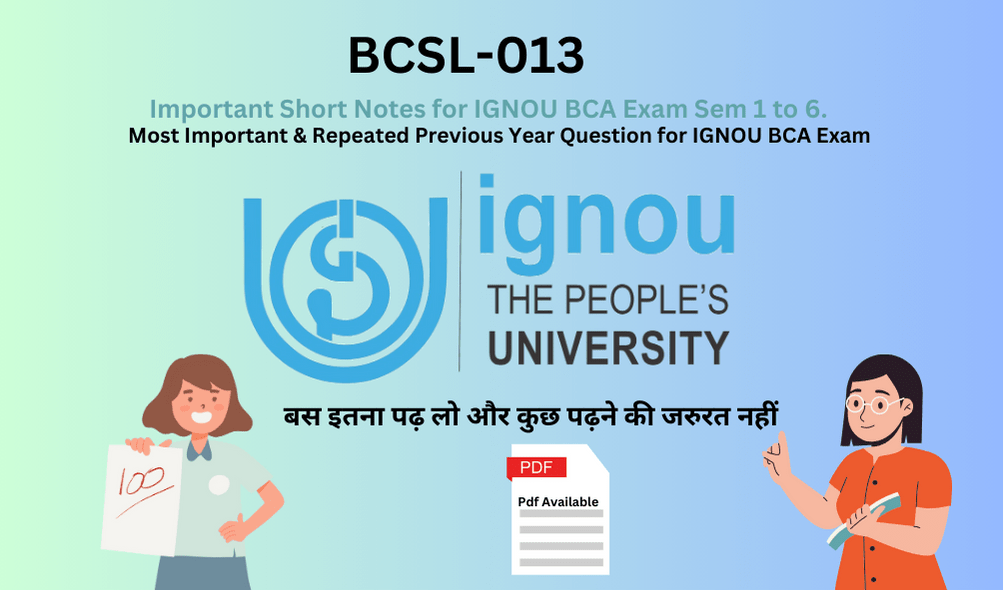
BCSL-013 Course Goals:
- To understand the basic ideas behind computer systems and their parts.
- To become skilled in the use of various PC programs, such as database management systems, word processors, spreadsheets, and presentation tools.
- To gain practical skills through assignments and hands-on lab work.
Introduction to BCSL-013: Computer Basics and PC Software Lab
Greetings and welcome to BCSL-013, Computer Basics and PC Software Lab, a required course for the Indira Gandhi National Open University’s (IGNOU) Bachelor of Computer Applications (BCA) program. The purpose of this course is to improve practical abilities in using a variety of PC software applications and to provide a strong foundation in the fundamental concepts of computer systems.
Proficiency in software tools and a thorough understanding of computer fundamentals are essential for academic and professional success in today’s technologically advanced world. The goal of BCSL-013 is to give students the information and abilities they need to successfully navigate and use computer systems.
Understanding the Importance of BCSL-013 VIVA Short Notes:
1. Overview : Brief notes reduce an extensive amount of material into essential ideas and points. They offer a rapid and effective means of studying the key subjects in advance of the examination.
2. Focus on the Essentials: You may focus on each topic’s key elements by summarizing the available information. This guarantees that you cover the most relevant subjects and helps in setting priorities for your study materials.
3. Improved Retention: Taking quick notes requires you to take an active role with the information. Compared to passive reading, active learning promotes improved understanding and retention of knowledge.
4. Quick Reference: Brief notes are a quick reference that come in helpful when making last-minute changes. To fast brush up on specific concepts or formulas, you can swiftly scan them.
5. Time management: You may cover a lot of ground in less time by taking brief notes. This is very helpful if you don’t have much time to study before the test.
Most Repeated BCSL-013 Important Questions for IGNOU BCA Exams Semester Wise :
What is a Kernel in a computer?
The kernel is the core component of an operating system that manages system resources and communication between hardware and software. It handles tasks such as process management, memory management, and device control.
What is Outlook?
Microsoft Outlook is a personal information manager from Microsoft, available as a part of the Microsoft Office suite. It is primarily an email application but also includes functions like calendaring, task managing, contact managing, note-taking, and web browsing.
What is Shell?
A shell is a user interface for accessing an operating system’s services. It can be command-line based (like Bash in UNIX/Linux) or graphical (like Windows Shell).
What is a hyperlink?
A hyperlink, often simply called a link, is a reference in a document that users can click on to navigate to another document or a different section of the same document. Hyperlinks are a fundamental feature of the World Wide Web.
What is an Operating System and Some Examples?
An operating system (OS) is software that manages computer hardware and software resources and provides common services for computer programs. Examples include Windows, macOS, Linux, and Android.
What are basic components of a computer?
The basic components of a computer include the central processing unit (CPU), memory (RAM and storage), input devices (keyboard, mouse), output devices (monitor, printer), and the motherboard.
What is a computer system?
A computer system consists of hardware, software, and peripheral devices that work together to perform data processing tasks.
What is Primary and Secondary memory?
Primary memory: Also known as main memory, it includes RAM and cache memory. It is fast and volatile, meaning it loses its contents when power is off.
Secondary memory: Non-volatile storage such as hard drives, SSDs, CDs, and USB drives. It retains data even when the computer is turned off.
What is the CPU of a computer?
The Central Processing Unit (CPU) is the primary component of a computer that performs most of the processing inside a computer. It interprets and executes instructions from hardware and software.
What do you mean by file in computer?
A file is a digital document or resource that stores data, which can be a text document, image, program, or any collection of information stored on a computer.
What is compiler and interpreter?
Compiler: A program that converts high-level code written in a programming language into machine code before execution.
Interpreter: A program that translates high-level code into machine code line-by-line at runtime.
What is high-level-language and low-level-language with example?
High-level language: Programming languages that are user-friendly and abstract from the hardware, such as Python, Java, and C++.
Low-level language: Programming languages that are closer to machine code, providing more control over hardware, such as Assembly language and machine code.
What is Internet?
The Internet is a global network of interconnected computers that communicate using standardized protocols to share information and resources.
Read More : BCS-012(BASIC MATHEMATICS) Important Short Notes| Expected Question |IGNOU BCA|
What are the main components of a computer?
The main components include the CPU, memory (RAM and storage), input devices, output devices, motherboard, power supply, and peripheral devices.
How to make a Spreadsheet?
To make a spreadsheet, you can use software like Microsoft Excel or Google Sheets:
Open the application.
Create a new document.
Enter data into cells.
Use formulas and functions to perform calculations.
Format the spreadsheet as needed.
Formulas in MS Excel
Common formulas include:
SUM(A1:A10): Adds all numbers in the range.
AVERAGE(B1:B10): Calculates the average.
IF(C1>10, "Yes", "No"): Conditional formula.
VLOOKUP(value, table, col_index, [range_lookup]): Lookup and reference.
What is WWW?
The World Wide Web (WWW) is a system of interlinked hypertext documents and multimedia content accessed via the Internet using web browsers.
What is an algorithm?
An algorithm is a step-by-step procedure or set of rules designed to perform a specific task or solve a problem.
What is memory?
Memory refers to the components of a computer that store data temporarily (RAM) or permanently (hard drive, SSD).
What are I/O ports?
Input/Output (I/O) ports are interfaces through which a computer connects with external devices such as keyboards, mice, printers, and external drives.
What is a keyboard?
A keyboard is an input device used to type text and execute commands on a computer.
Discuss different types of keys?
Alphanumeric keys: Letters and numbers.
Function keys: F1 to F12 for specific functions.
Control keys: Ctrl, Alt, Shift for modifying actions.
Navigation keys: Arrow keys, Home, End, Page Up, Page Down.
Numeric keypad: Number keys arranged in a calculator-like layout.
How does a keyboard connect to a computer?
Keyboards connect to computers via USB, PS/2 ports, or wirelessly through Bluetooth or RF (radio frequency) connections.
How do wireless keyboards work?
Wireless keyboards use Bluetooth or RF technology to transmit signals to a receiver connected to the computer, enabling a cable-free connection.
Explain Mouse?
A mouse is an input device that allows users to interact with a computer by moving a cursor on the screen and performing actions through clicks and scrolls.
Explain about mouse buttons?
Left button: Primary button used for selecting and clicking.
Right button: Opens context menus.
Middle button/scroll wheel: Scrolls through documents and webpages; sometimes used as a third button.
Describe some mouse actions?
Click: Pressing and releasing a mouse button.
Double-click: Quickly pressing and releasing a mouse button twice.
Right-click: Clicking the right button to open a context menu.
Drag and drop: Clicking and holding a button while moving the mouse to drag an item, then releasing to drop it.
How is a mouse connected to a PC?
Mouse connect to PCs via USB ports, PS/2 ports, or wirelessly using Bluetooth or RF.
Explain RAM?
Random Access Memory (RAM) is volatile memory used by a computer to store data temporarily while the machine is running.
Explain Types of RAM?
DRAM (Dynamic RAM): Needs periodic refreshing of data.
SRAM (Static RAM): Faster and does not need refreshing, used in cache.
SDRAM (Synchronous DRAM): Synchronized with the system clock.
DDR SDRAM (Double Data Rate SDRAM): Transfers data on both rising and falling edges of the clock signal.
What is ROM?
Read-Only Memory (ROM) is non-volatile memory used to store firmware or software that is rarely changed.
Explain types of ROM?
PROM (Programmable ROM): Can be programmed once.
EPROM (Erasable PROM): Can be erased with UV light and reprogrammed.
EEPROM (Electrically Erasable PROM): Can be electrically erased and reprogrammed.
Explain hard disk?
A hard disk drive (HDD) is a data storage device that uses magnetic storage to store and retrieve digital information.
What is Windows?
Windows is a series of operating systems developed by Microsoft, known for its graphical user interface.
What is Windows XP?
Windows XP is an operating system produced by Microsoft as part of the Windows NT family, released in 2001, known for its improved user interface and stability over previous versions.
What is the meaning of desktop?
The desktop is the primary user interface of a computer’s operating system, displaying icons, files, and folders.
Describe basic parts of Windows?
Desktop: Main screen area.
Taskbar: Contains the Start menu, system tray, and open applications.
Start Menu: Access to programs, settings, and files.
Windows/File Explorer: Manages files and folders.
What is UNIX?
UNIX is a powerful, multiuser, multitasking operating system originally developed in the 1960s and 1970s, known for its stability and security.
What is Linux?
Linux is an open-source operating system based on UNIX, widely used for its flexibility, security, and performance in servers, desktops, and embedded systems.
Shortcut Keys
Here are some commonly used shortcut keys for Windows:
Windows Shortcuts
- Ctrl + C: Copy
- Ctrl + X: Cut
- Ctrl + V: Paste
- Ctrl + Z: Undo
- Ctrl + Y: Redo
- Ctrl + A: Select All
- Ctrl + S: Save
- Ctrl + P: Print
- Ctrl + F: Find
- Alt + Tab: Switch between open applications
- Ctrl + Alt + Delete: Open the Security Options screen
- Win + D: Show/Hide desktop
- Win + L: Lock your computer
- Win + E: Open File Explorer
- Win + R: Open the Run dialog box
Download PDF Of Above Content In 3 Paper
Conclusion:
With these IGNOU BCSL-13 BCA short notes, you’ll be well-equipped to tackle your exams with confidence. Remember to complement your study efforts with regular practice and mock tests. Good luck!

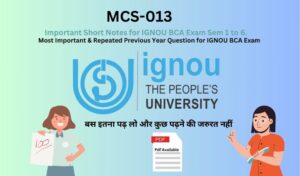
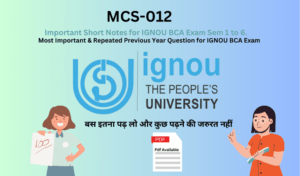
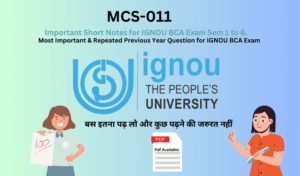
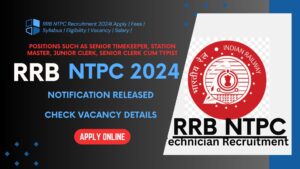
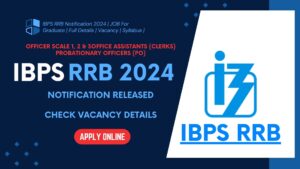
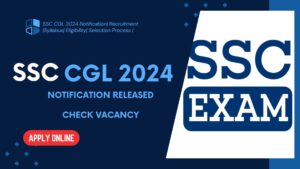
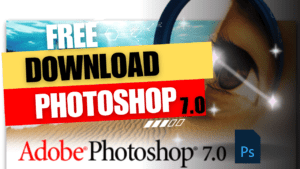
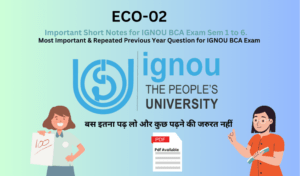
[…] Read More: BCSL-13(Computer Basics and PC Software LabBCSL-13) Important Short Notes| Expected Question |IGNOU … […]